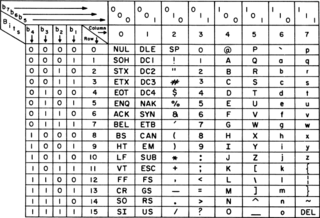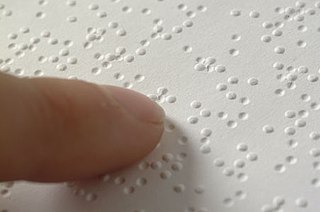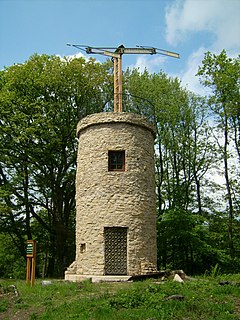 W
WASCII, abbreviated from American Standard Code for Information Interchange, is a character encoding standard for electronic communication. ASCII codes represent text in computers, telecommunications equipment, and other devices. Most modern character-encoding schemes are based on ASCII, although they support many additional characters.
 W
WBoston line letter was a tactile writing system created by Dr. Samuel Gridley Howe in 1835, a popular precursor to the now-standardized Braille.
 W
WBraille is a tactile writing system used by people who are visually impaired. It is traditionally written with embossed paper. Braille users can read computer screens and other electronic supports using refreshable braille displays. They can write braille with the original slate and stylus or type it on a braille writer, such as a portable braille notetaker or computer that prints with a braille embosser.
 W
WFerranti or Ferranti International plc was a UK electrical engineering and equipment firm that operated for over a century from 1885 until it went bankrupt in 1993. The company was once a constituent of the FTSE 100 Index.
 W
WCode letters or ship's call sign were a method of identifying ships before the introduction of modern navigation aids and today also. Later, with the introduction of radio, code letters were also used as radio call signs.
 W
WEnglish Braille, also known as Grade 2 Braille, is the braille alphabet used for English. It consists of around 250 letters (phonograms), numerals, punctuation, formatting marks, contractions, and abbreviations (logograms). Some English Braille letters, such as ⠡ ⟨ch⟩, correspond to more than one letter in print.
 W
WFlag semaphore is a semaphore system conveying information at a distance by means of visual signals with hand-held flags, rods, disks, paddles, or occasionally bare or gloved hands. Information is encoded by the position of the flags; it is read when the flag is in a fixed position. Semaphores were adopted and widely used in the maritime world in the 19th century. It is still used during underway replenishment at sea and is acceptable for emergency communication in daylight or using lighted wands instead of flags, at night.
 W
WInternational maritime signal flags are various flags used to communicate with ships. The principal system of flags and associated codes is the International Code of Signals. Various navies have flag systems with additional flags and codes, and other flags are used in special uses, or have historical significance.
 W
WThe Irish manual alphabet is the manual alphabet used in Irish Sign Language. Compared with other manual alphabets based on the Latin alphabet, it has unusual forms for the letters G, K, L, P, and Q.
 W
WLeet, also known as eleet or leetspeak, is a system of modified spellings used primarily on the Internet. It often uses character replacements in ways that play on the similarity of their glyphs via reflection or other resemblance. Additionally, it modifies certain words based on a system of suffixes and alternate meanings. There are many dialects or linguistic varieties in different online communities.
 W
WMorse code is a method used in telecommunication to encode text characters as standardized sequences of two different signal durations, called dots and dashes, or dits and dahs. Morse code is named after Samuel Morse, one of the inventors of the telegraph.
 W
WThe International Radiotelephony Spelling Alphabet, commonly known as the NATO phonetic alphabet, NATO spelling alphabet, ICAO phonetic alphabet or ICAO spelling alphabet, is the most widely used radiotelephone spelling alphabet. The ITU phonetic alphabet and figure code is a rarely used variant that differs in the code words for digits.
 W
WThe Portuguese manual alphabet is the manual alphabet used in Portuguese Sign Language. Compared to other manual alphabets based on the Latin alphabet, it has unusual forms for many of its letters.Letters
 W
WAn optical telegraph is a line of stations, typically towers, for the purpose of conveying textual information by means of visual signals. There are two main types of such systems; the semaphore telegraph which uses pivoted indicator arms and conveys information according to the direction the indicators point, and the shutter telegraph which uses panels that can be rotated to block or pass the light from the sky behind to convey information.
 W
WThe Z flag is one of the international maritime signal flags.